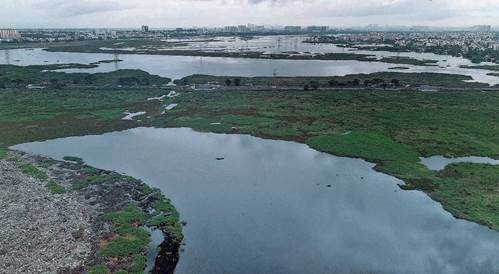Free Courses Sale ends Soon, Get It Now


Free Courses Sale ends Soon, Get It Now



Disclaimer: Copyright infringement not intended.
Context: India has added five more Ramsar sites, or wetlands of international importance, bringing the number of such sites in the country to 54, Environment Minister Bhupendra Yadav said.
More on the news:
About:
|
Ramsar Sites in India |
Location |
|
Khijadia Wildlife Sanctuary |
Gujarat |
|
Bakhira Wildlife Sanctuary |
Uttar Pradesh |
|
Haiderpur Wetland |
Uttar Pradesh |
|
Sultanpur National Park |
Haryana |
|
Bhindawas Wildlife Sanctuary |
Haryana |
|
Thol Lake Wildlife Sanctuary |
Gujarat |
|
Wadhvana Wetland |
Gujarat |
|
Ashtamudi Wetland |
Kerala |
|
Beas Conservation Reserve |
Punjab |
|
Bhitarkanika Mangroves |
Odisha |
|
Bhoj Wetlands |
Madhya Pradesh |
|
Chandra Taal |
Himachal Pradesh |
|
Chilika Lake |
Odisha |
|
Deepor Beel |
Assam |
|
East Kolkata Wetlands |
West Bengal |
|
Harike Wetlands |
Punjab |
|
Hokera Wetland |
Jammu & Kashmir |
|
Kanjli Wetland |
Punjab |
|
Keoladeo National Park |
Rajasthan |
|
Keshopur-Miani Community Reserve |
Punjab |
|
Kolleru lake |
Andhra Pradesh |
|
Loktak lake |
Manipur |
|
Nalsarovar Bird sanctuary |
Gujarat |
|
Nandur Madhameshwar |
Maharashtra |
|
Nangal Wildlife Sanctuary |
Punjab |
|
Nawabganj Bird Sanctuary |
Uttar Pradesh |
|
Parvati Agra Bird Sanctuary |
Uttar Pradesh |
|
Point Calimere Wildlife and Bird Sanctuary |
Tamil Nadu |
|
Pong Dam lake |
Himachal Pradesh |
|
Renuka lake |
Himachal Pradesh |
|
Ropar Wetland |
Punjab |
|
Rudrasagar Lake |
Tripura |
|
Saman Bird Sanctuary |
Uttar Pradesh |
|
Samaspur Bird Sanctuary |
Uttar Pradesh |
|
Sambhar lake |
Rajasthan |
|
Sandi Bird Sanctuary |
Uttar Pradesh |
|
Sarsai Nawar Jheel |
Uttar Pradesh |
|
Sasthamkotta lake |
Kerala |
|
Surinsar- Mansar lakes |
Jammu & Kashmir |
|
Tsomoriri |
Ladakh |
|
Upper Ganga river |
Uttar Pradesh |
|
Vembanad Kol Wetland |
Kerala |
|
Wular lake |
Jammu & Kashmir |
|
Sunderban Wetland |
West Bengal |
|
Asan Barrage |
Uttarakhand |
|
Kanwar Lake or Kabal Taal |
Bihar |
|
Lonar Lake |
Maharashtra |
|
Sur Sarovar |
Uttar Pradesh |
|
Tso Kar Wetland Complex |
Ladakh |
https://epaper.thehindu.com/Home/ArticleView
© 2024 iasgyan. All right reserved